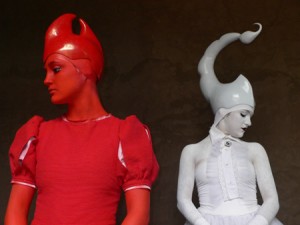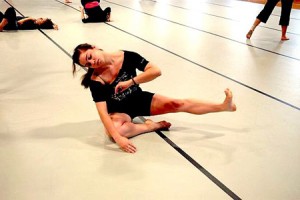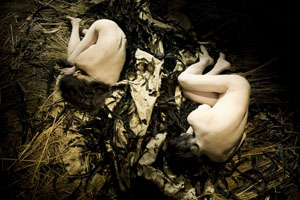Shira Engel ’14 interviews Sonya Freeman ’12, co-founder of WesHEAL.
 At Creative Campus, we define creativity in a broad sense. Creativity is not limited to a narrow definition of “the arts.” It is, rather, a way of going about life. At Wesleyan where students use innovative means to express themselves through student groups, it is important to acknowledge the creativity that goes behind student organizing. So, to kick off the post-Student Activities Fair year, I interviewed Sonya Freeman, co-founder of WesHEAL (Helping Envision Alternative Lifestyles) on how she views creative ways to go about healing.
At Creative Campus, we define creativity in a broad sense. Creativity is not limited to a narrow definition of “the arts.” It is, rather, a way of going about life. At Wesleyan where students use innovative means to express themselves through student groups, it is important to acknowledge the creativity that goes behind student organizing. So, to kick off the post-Student Activities Fair year, I interviewed Sonya Freeman, co-founder of WesHEAL (Helping Envision Alternative Lifestyles) on how she views creative ways to go about healing.
Why did you decide to start WesHEAL?
I came back from Ecuador feeling particularly passionate about healing – using herbal remedies, accupuncture, ayurveda, and natural medicine in general. My experience working in a water birth clinic in Ecuador and my job as a research assistant at Cornell Medical College have taught me about working with different kinds of healing methods, specifically targeted towards women. At the birth clinic, I danced with women to relax their bodies before beginning contractions and watched as they gave birth in bathtubs. At Cornell, I worked in reproductive psychiatry, where they focus on treating illness with medication. I felt inspired by both methods of healing. When I returned to Wes, I did some research and learned about integrative/complementary medicine. When I started talking to students about the topic, they tended to show interest. Hannah Cressy ’13 teamed up to create and lead an official student group based on raising awareness of integrative medicine through education and activism. We worked with Lisa Sy ’13 to make a logo and spread the word about the group using posters, Facebook, Wesleying, and the student groups fair. We have covered a wide range of opinions on a wide range of topics, including the most effective ways to address different illnesses, the placebo effect, the dynamics of the doctor-patient relationship, and many more!
How did you create an image for the club that reflected its ideals?
The more opinions we have, the more effective the group will be. We want the group to be viewed as an exciting new initiative that will grow on account of its accessibility to the student body. We aim to provide an open space where people can talk freely about healing, which can be a very personal topic.
How would you consider WesHEAL a creative endeavor?
It’s a relatively new idea that is being developed all over the United States. Integrative medicine is an approach to healing that requires an open mind to all types of medicine in the world. Combining the approaches to healing used in different parts of the world, including the Westernized medicine we’ve been raised on, is special and creative.
What’s your vision for WesHEAL?
This year, we aim to create a healing section at Weshop, which will include natural remedies and directions on how to use them effectively, and install a meditation room in the library to be utilized during midterms and finals (the times when students tend to treat their bodies the worst!). We also want to bring in a guest speaker from the Osher Institute at Harvard (an organization that specializes in integrative medicine), and screen a movie about integrative methods of healing. In the long term, we hope WesHEAL will grow into a strong presence on the Wesleyan campus. Integrative medicine is constantly developing and changing. We hope to keep students and faculty informed about and involved in the advances in this growing field.






